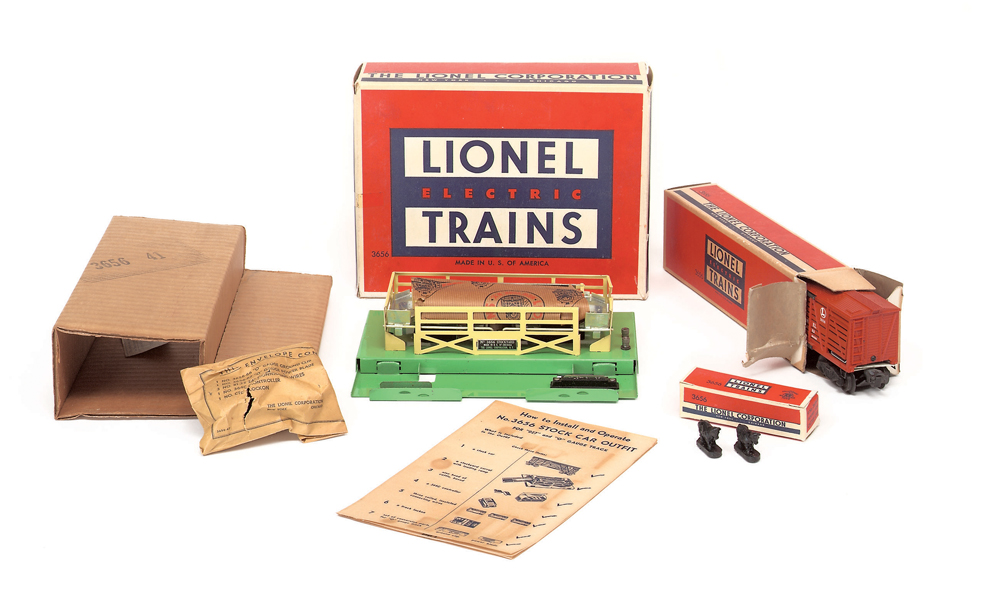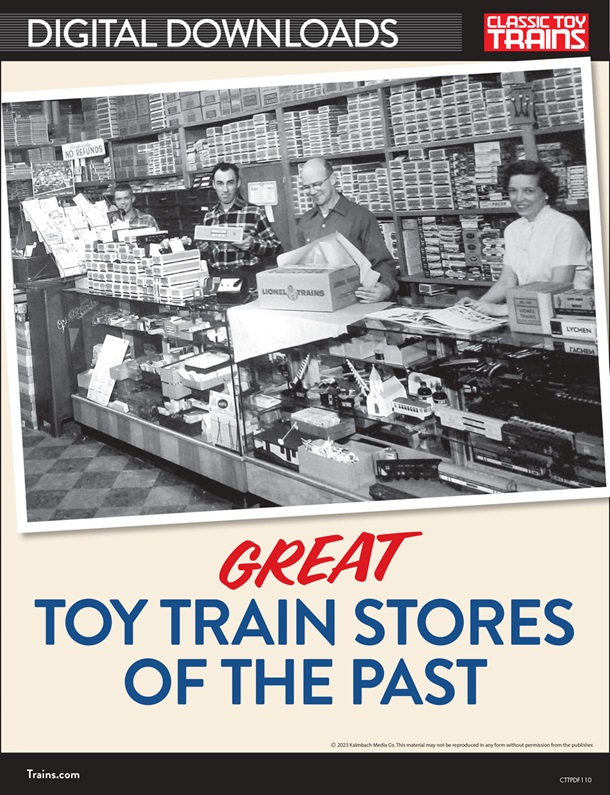I found this manuscript from the late John Grams in our manuscript files. There was no date on the envelope but it’s likely from the early 1990s. The article discusses 12 Lionel products that, while great inventions, were fraught with problems or didn’t work exactly as advertised. He included the following disclaimer:
Lionel trains were sold as toys. They were fun, fairly reliable and expensive playthings, manufactured with no thought beyond that purpose.They were not supposed to be precision scale models. That was an entirely different thing. While they were durably constructed, the trains were not intended to outlast the interest span of their young owners. No one considered them to be objects of popular art or future collectibles.
The toy business has always been a fickle one, trendy and highly competitive. J. L. Cowen not only had fine quality imports to worry about as he built his business, the domestic competition from Ives, American Flyer, and Marx must have contributed significantly to his stress. While Lionel was eventually able to absorb Ives and Flyer, Marx was still there gobbling up the low price, high volume end of the market.
The trains were not designed and produced by Santa’s helpers at the North Pole, but by flesh and blood human beings on an assembly line in New Jersey. Mistakes happened. Flaws and defects were sometimes overlooked.
I will be sharing these items over the next few weeks. I hope you enjoy them. –Rene Schweitzer, Editor of Classic Toy Trains
The Scout motor

Some people complain today about the “cheap can motors” in the lower priced Lionel locomotives, perhaps with good reason. They are indicators of our “throwaway” society, which emphasizes replacement instead of repair. But, this kind of calculated obsolescence is not new to the world of trains, Lionel introduced it decades ago when they developed the Bakelite-encased Scout motors. Those things couldn’t be repaired either, and they didn’t run as smoothly.
Produced on and off between 1948 and 1967, Scout motors were a cost-cutting compromise, which, despite attempted improvements over the years, caused ulcers and gray hair for authorized service station operators.
A resistor on the transformer was required to throttle them down satisfactorily. The two-position reversing mechanism, built inside the Bakelite case, was unreliable even when new. “Scout” engines were prone to stall or change direction without provocation. It was impossible to adjust or repair the reversing apparatus without taking the entire motor apart, and there was always the danger of breaking the fragile Bakelite case when attempting ·to remove the wheels.
Because Scout motors had no wheel bearings, and couldn’t be lubricated properly, they had a short life expectancy. One early 1950’s service manual discouraged repairs, and recommended replacing the entire motor with a better one, “No. 2034-100 …. This motor is designed to be interchangeable with the plastic Scout motor …. “














